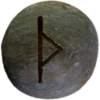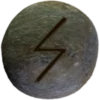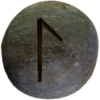Last Updated on March 28, 2025


Physical Fitness in Ancient Times
Vikings maintained their physical fitness through their daily lives and demanding environment. They worked hard on farms, hunted, and fished, which kept them strong and agile. These tasks built muscle and endurance as they often required long hours of physical labor. Farmers plowed fields, harvested crops, and handled livestock, all of which demanded strength.
Their warrior lifestyle also shaped their bodies. Training for battle meant learning to use heavy weapons like swords, axes, and shields. Vikings practiced regularly to sharpen their skills, which also built arm and core strength. They trained in close combat, requiring agility and fast reflexes. Additionally, they rowed longboats on raids, which strengthened their shoulders and upper bodies.
The Viking diet contributed to their overall fitness. They ate a high-protein diet rich in fish, meat, and dairy. Their food provided the necessary nutrients to build muscle and maintain energy for physically demanding tasks.
Living in harsh conditions also made them resilient. They needed stamina and strength to survive cold winters and difficult terrain. Their daily activities—working, training, and surviving—kept them in peak physical condition. The combination of active labor, combat training, and a protein-rich diet ensured they stayed in shape.
Physical Fitness in Modernity
Maintaining your physical fitness in modern times presents unique challenges. Many jobs today involve sitting for long hours. This lack of movement leads to decreased energy and muscle tone. Additionally, fast food and processed snacks are easily accessible, making unhealthy choices tempting. These foods often lack essential nutrients and can cause weight gain.
Technology has also made life more convenient. People now rely on cars, public transportation, and delivery services. Fewer opportunities for natural physical activity exist in daily routines. On top of that, busy schedules can make it difficult to find time for exercise. Work, family, and other commitments often take priority over fitness routines.
Stress from modern life can further reduce motivation to stay active. Mental fatigue from constant connectivity and pressure can make exercising seem daunting. Without regular activity and healthy eating habits, staying fit in the modern world requires conscious effort and discipline.
Runes Associated with Physical Fitness
The Ūruz (ᚢ) and Thurisaz (ᚦ) Elder Futhark runes symbolize strength and endurance. ![]()
Ūruz represents raw power, resilience, and vitality. It connects to the aurochs, a wild ox known for its unmatched strength. This rune embodies endurance, muscle growth, and overall physical health. Warriors sought Ūruz for stamina in battle. Today, it relates to physical training, pushing limits, and maintaining robust health.
Thurisaz embodies controlled aggression and force. It relates to the thorn, a sharp defense against threats. This rune represents explosive power, reaction speed, and self-discipline. Fighters embraced Thurisaz for strength in combat. In modern times, it signifies focus in strength training, agility, and overcoming physical obstacles.
Both runes reinforce discipline and resilience. Ūruz builds foundational strength, while Thurisaz refines explosive action. Their synergy supports balanced physical fitness, where endurance meets precision. Those embracing these symbols cultivate strength, control, and perseverance in their training.
Its Importance to Asatru
Physical fitness strengthens the body and mind, aligning with Asatruar values of resilience and self-reliance. Strength and endurance prepare individuals for life’s challenges, reflecting the Viking spirit. A strong body enhances willpower, reinforcing personal honor and discipline.
Training outdoors connects Asatruar with nature, honoring the landvættir (land spirits, lahnd-vet-teer). Running, lifting, and combat drills echo ancestral practices, fostering a deeper bond with tradition. Physical hardship builds perseverance, mirroring the trials faced by the gods.
Maintaining fitness demonstrates commitment to one’s tribe. A capable body ensures readiness to protect kin and contribute to the community. Asatruar embrace self-improvement, recognizing strength as a sacred duty. The pursuit of fitness is not vanity but a reflection of one’s dedication to life, ancestors, and the gods.


